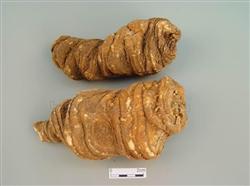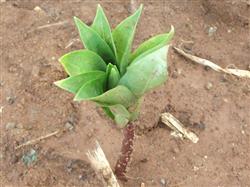Sharing: planting techniques of heavy buildings

Chonglou is a perennial herb with a long growth cycle, which takes 8 to 10 years from sowing to harvest. It is one of the main components of traditional Chinese medicine protected by Yunnan Baiyao and Gongxuening. In recent years, with the continuous increase in demand, the rate of mining far exceeds the speed of natural growth, resulting in the scarcity of heavy building resources. Artificial seedling propagation in production is an effective way to solve this situation. The following provides heavy building planting techniques for reference: first, land selection and land preparation: heavy buildings are not strict with the general climate and soil types, but require a special microclimate for growth and development, and site selection is the most important. It is most ideal to choose night tide land, ash bubble soil and humus land with short sunshine or flat land and loose texture, which have strong water retention and permeability. Second, the planting method: the heavy building is mainly planted with seeds, and it can also be planted with rhizomes. 1. Seed planting. It is best to use direct seeding, but in order to save seeds and high yield, we can use seeds to raise seedlings and transplant. (1) Live broadcast. After soaking rain in mid and late May, hit a small shallow pond with a row spacing of 30ml / 35cm, a plant spacing of 20cm / 25cm, a small shallow pond 5cm deep, a narrow moisture of 130cm in 4 rows, and a wide soil moisture of 150cm in 5 rows. Soak the seeds in cold water for 24 hours before sowing, sow them with plant ash, plant 3 seeds in each pond. After sowing, cover the fertile soil with fine dung and half of the fine soil, 2Mel 3cm. The dry soil should be watered in time, and the seedlings will germinate in 10 days. (2) Seedling and transplanting. This is an important measure to save seeds and strive for festivals. Choose the seedbed in the dry land or vegetable garden with water in early April. Before digging the land, it is best to use 40% pentachloronitrobenzene, 5 grams of fine soil per square meter, to carry out soil disinfection, and then repeatedly dig the topsoil layer, flatten the soil surface, open a sowing ditch with a depth of about 5 centimeters on the soil surface, sow seeds in the ditch with a spacing of 5 centimeters, then cover 3 centimeters of soil, cover 2 centimeters of fine dung, water thoroughly and cover the plastic film, and the seedlings can emerge in 7 days. After raising seedlings for one month, the seedlings were transplanted to the field according to the specifications of direct seeding. 2. Rhizome planting. In autumn and winter, the sturdy, disease-and pest-free rhizome was stored in a cool and dry place, and it was taken out in the first and middle of April of the following year. According to the characteristics of bud remnant stem and bud mark, it was cut into small segments, each section was guaranteed to take 1 bud mark, after being properly dried and mixed with plant ash, it was planted in the seedling bed like sowing and covered with film. After taking root and sprouting for 20 days, it was transplanted to the field according to the direct seeding specification in the middle and late May. Click to get more planting techniques of Rhizoma thunbergii
- Prev

What's the use of building a new building? How to grow and manage?
What's the use of building a new building? How to grow and manage? It belongs to Liliaceae, perennial herb, and is one of the main ingredients of traditional Chinese medicine protected by the state, such as "Yunnan Baiyao" and "Gongxuening". The medicinal part is the dry tuber of Zhonglou. The smell of the building is heavy.
- Next

How to control diseases and insect pests of Yunnan Zhonglou seedlings?
How to control diseases and insect pests of Yunnan Zhonglou seedlings? Please give the introduction method Yunnan Zhonglou seedling pest control can refer to the following methods: 1, pest control. The main pests in seedling stage are ground tiger, grub and so on. Ground tigers and grubs are poisoned with 90% crystal trichlorfon (180 / mu, 200g / mu) and fried rice bran (8Mui / 10 / mu).
Related
- Fuxing push coffee new agricultural production and marketing class: lack of small-scale processing plants
- Jujube rice field leisure farm deep ploughing Yilan for five years to create a space for organic food and play
- Nongyu Farm-A trial of organic papaya for brave women with advanced technology
- Four points for attention in the prevention and control of diseases and insect pests of edible fungi
- How to add nutrient solution to Edible Fungi
- Is there any good way to control edible fungus mites?
- Open Inoculation Technology of Edible Fungi
- Is there any clever way to use fertilizer for edible fungus in winter?
- What agents are used to kill the pathogens of edible fungi in the mushroom shed?
- Rapid drying of Edible Fungi

